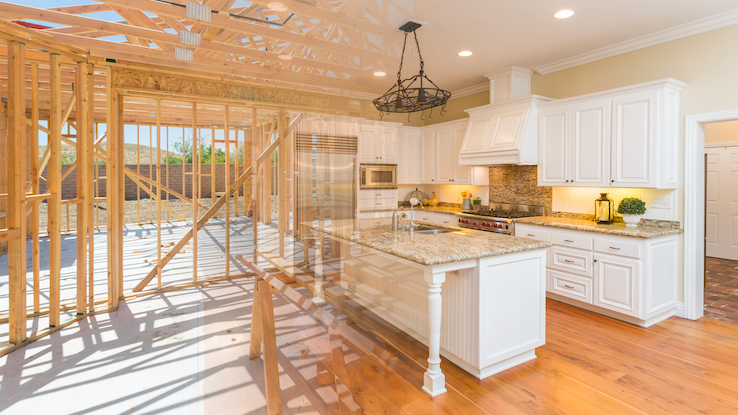
Overall, 91% of homeowners feel their houses are in need of minor or major renovations. Couple that with the fact that mortgaged real estate saw $3.2 trillion in equity gains in 2021, and many homeowners may be looking for options to tap that equity to fund the cost of upgrades and repairs. That’s where home improvement loans come into play.
Home improvement loans are financial products that are designed with home renovations, updates, and repairs in mind. Here’s a look at some of the common types of home improvement loans.
FHA Loans
Federal Housing Administration (FHA) loans are government-insured mortgages that are functionally backed by the federal government, giving the lender administering the loans some peace of mind. One program available is the FHA 203(k) rehab loan, a renovation mortgage that is primarily used to fund the purchase of a fixer-upper and fund the needed repairs. It’s also a refinance option that lets people refinance their current mortgage and receive money for updates, all with a single monthly payment.
FHA 203(k) rehab loans are one of the more restrictive options when it comes to using the provided funds, but they’re also highly accessible. Credit score requirements are often relatively low, and interest rates are competitive.
Another program through the FHA is the FHA Title 1 Property Improvement Loan. Generally, this option is worth exploring if a homeowner doesn’t have good credit and their amount of equity in the home is lower. The money received can only go toward home improvements that meet FHA criteria, but the rules aren’t overly strict.
Cash-Out Refinancing
Cash-out refinancing involves refinancing an existing mortgage and tapping the equity at the same time. Essentially, homeowners can get a new mortgage for an amount that’s above and beyond what they owe on their current mortgage. Any money above the amount needed to cover paying off the existing mortgage is provided as a lump sum, allowing homeowners to use the funds to handle home improvements.
With a cash-out refinance, the total amount borrowed – including covering the existing mortgage and any additional funds received – can’t exceed 80% of the home’s value. Additionally, this option usually works best when interest rates are lower than what’s on a homeowner’s existing mortgage. It’s also helpful if the loan term is similar to the remaining life of the current mortgage, though that’s not a necessity.
Home Equity Loans
A home equity loan is generally a second mortgage, allowing you to use existing home equity as collateral. Any tapped equity is provided as a lump sum, and repayment works like a traditional installment loan.
The benefit of home equity loans is that interest rates are lower than unsecured loans. Plus, it helps homeowners leverage their equity for home-related expenses. Since home upgrades or repairs may increase their home’s value, that could also work in their favor.
However, this approach does mean having another monthly payment, and the interest rate is usually higher than primary mortgage’s. Additionally, repayment terms may be as short as five years, though term lengths as long as 30 years are also potentially available, depending on the amount borrowed.
HELOCs
A home equity line of credit (HELOC) also takes advantage of existing equity, but it works differently than a traditional installment loan. Instead, homeowners are given a credit line based on the equity available. Then, homeowners can withdraw funds as required and only pay interest on that amount.
HELOC interest rates vary, but they’re lower than some alternatives since the house serves as collateral. Additionally, for the first 10 years – during the draw period – interest-only payments are usually allowed. Once the HELOC goes into repayment, withdrawing more money isn’t permitted, and payments increase to cover interest and the principal.





